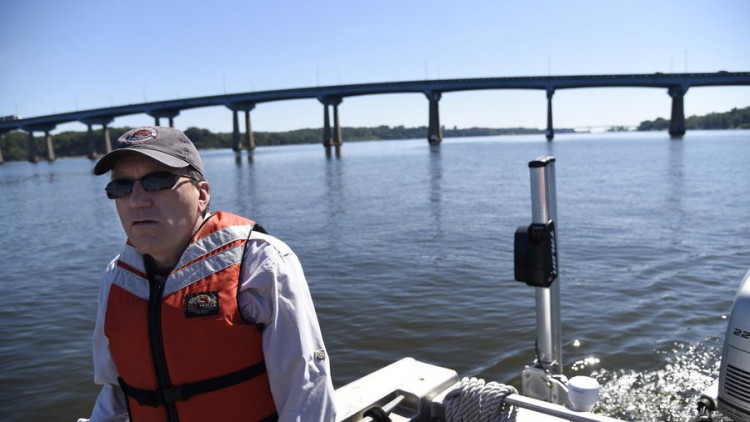Results from a six-year NCCOS sponsored study on the impacts of different approaches to erosion control — seawalls, riprap, and “living shorelines” — on submerged aquatic plants, crabs, fish, ducks, and geese in Chesapeake Bay has prompted government regulators to consider the cumulative impacts of shoreline armoring projects in upcoming management decisions. Scientists have presented the results from the $4.5 million study to the Chesapeake Bay Goal Implementation Team, which is comprised of state and regional management agencies.
Researchers from eight universities and multiple government agencies are investigating the large scale effects increased shoreline hardening has on the entire estuary and how the system might recover if natural habitats are restored. Results so far suggest significant changes to estuaries: hardened shorelines degrade habitat for submerged aquatic vegetation, fish prefer natural shorelines, and jellyfish appear to gain an advantage due to hardened structures.

Waterfront property owners across the country experience increasing threats from erosion due to storm surge-combined sea level rise prompting protection measures. Though scientific information on the impacts of shoreline hardening measures is limited, “living shorelines” are, in theory, a good faith effort to provide resilient yet ecologically sound erosion protection.
As development along the Chesapeake Bay increases every year, it is becoming apparent that a different approach to erosion control is necessary in the Bay. The results of this study will provide the scientific data to pursue a more regional, rather than the current “parcel by parcel,” approach to protecting the Bay’s critical shallow habitats could improve estuarine health while addressing the concerns of property owners.
For more information, contact Rob.Magnien@noaa.gov or Elizabeth.Turner@noaa.gov.
